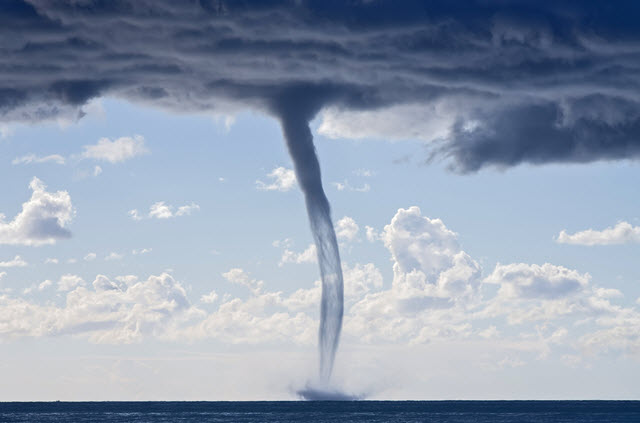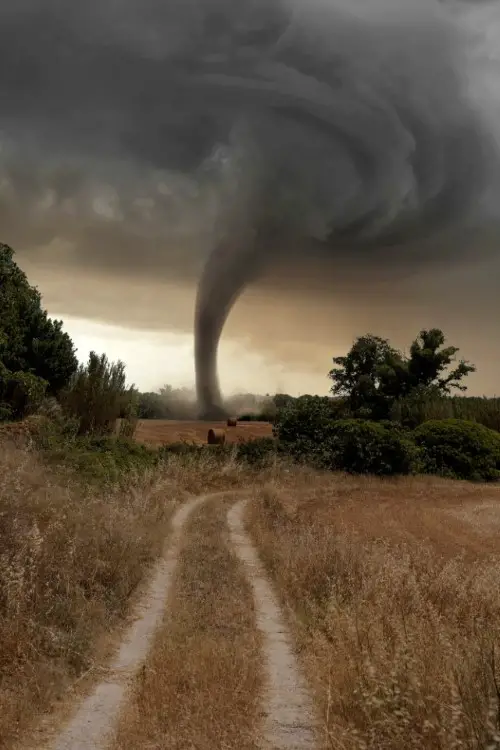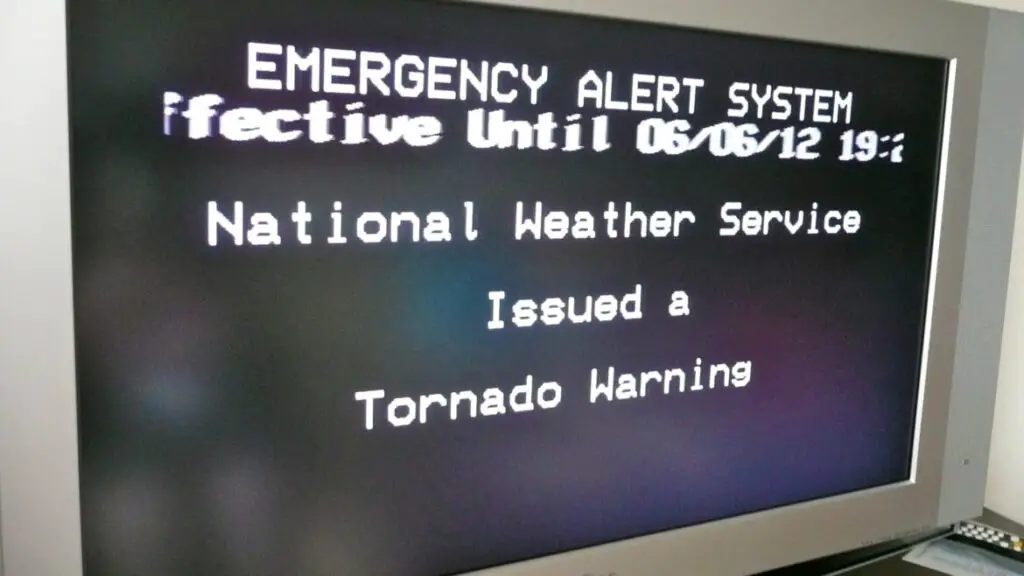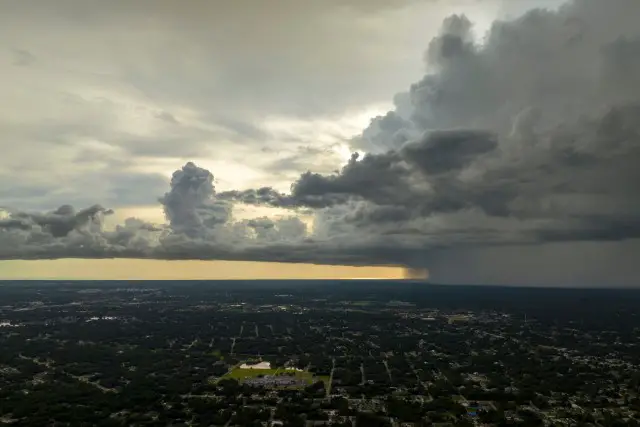What Are the Odds of Dying In a Tornado? The Most Violent Storm on Earth
Tornadoes are nature’s most violent storms, renowned for their destructive power and their ability to wreak havoc within moments. Nevertheless, the chances of dying in a tornado are relatively low, thanks to the advancements in early warning systems and preparedness measures. However, the odds can significantly vary based on factors such as location, quality of construction, and individual response to warnings. This article aims to provide an in-depth understanding of the odds of dying in a tornado and the various elements that influence these odds. In this article, let’s look in depth at the question of what are the odds of dying in a Tornado, and why they are almost 10,000,000+ to 1.
What are the Odds of Dying in a Tornado? Less than Getting Struck by Lightning
According to the US National Safety Council, the odds of dying from a tornado are 1 in 13,000,000, a statistic far less likely than being struck by lightning, which stands at 1 in 8,000,000. It’s vital to note, however, that these odds are averages across the entire U.S. population. Consequently, the risk for individuals residing in tornado-prone areas, often referred to as ‘Tornado Alley’,  is undoubtedly higher.
is undoubtedly higher.
The quality of construction and architectural integrity of your home also play pivotal roles in determining the odds of tornado fatalities. Homes built to withstand high winds and pressure changes are more likely to protect their inhabitants. Additionally, availability and access to safe rooms or storm shelters can drastically lower the odds of dying in a tornado. These are specially designed and constructed areas in your home or nearby that provide a high level of protection during severe wind events.
What is the Safest Thing to Do in a Tornado?
When a tornado is imminent, taking the right safety measures can drastically reduce the risk of fatalities. Here are five key things to do:
- Seek Shelter Immediately: If you have a storm shelter or basement, go there immediately. If not, find a small, windowless interior room on the lowest level of your house.
- Protect Yourself: Use mattresses, heavy coats, blankets, or padded items to protect yourself from flying debris.
- Stay Informed: Keep abreast of the situation via a battery-powered weather radio or reliable news source. This will help you know when the danger has passed.
- Avoid Cars and Mobile Homes: Statistics show that these are the most dangerous places to be during a tornado. If you’re in a car, find a sturdy building to take shelter in. If you’re in a mobile home, evacuate and seek shelter elsewhere.
- Be Prepared: Have a plan for tornado events. This includes knowing where to take shelter, having emergency supplies on hand, and understanding the warning signs of a tornado.
What Is the Top Wind Speed in a Tornado?
Tornadoes boast incredibly high wind speeds, with the most potent among them reaching near inconceivable velocities. According to the National Oceanic and Atmospheric Administration (NOAA), the highest wind speed ever recorded in a tornado was an astounding 301 mph. This speed was noted in the devastating EF5 tornado which struck Bridge Creek-Moore, Oklahoma, on May 3, 1999. It’s important to understand that such extreme wind speeds are associated with the most violent tornadoes, which, thankfully, are relatively rare. The majority of tornadoes are much weaker, with wind speeds that, while still dangerous, do not approach these record-breaking figures.
| Related Posts |
|---|
What Should You Do If You Are Stuck in Your Car During a Tornado?
If you find yourself stuck in your car during a tornado, the following steps can help increase your chances of survival:
- Drive at Right Angles Away From the Tornado: If the tornado is far away and traffic is light, you might be able to drive out of its path by moving at right angles to the tornado.
- Never Try to Outrun a Tornado in Urban or Congested Areas: While tornadoes can travel quickly, traffic and other obstacles can impede your escape. It’s safer to find a fortified structure.
- Stay in Your Car If No Shelter Is Available: If you can’t safely exit your vehicle or there isn’t a building nearby, it’s safest to stay put. Park the car, fasten your seatbelt, and duck down low, below the level of the windows, covering your head with your hands and a blanket if possible.
- Duck and cover if all else fails: Securely fastened your seatbelts and duck as low as possible. Every body in the car should cover themselves up to protect from debris, broken glasses and other flying objects. The destructive power of a tornado shouldn’t be taken lightly, even if the odds of dying in one are relatively low. Knowledge, preparation, and adherence to safety measures can significantly reduce the risk associated with these fierce storms.
- Is underground parking safe in tornado? Underground parking can provide a safer environment during a tornado than being out in the open or in a vehicle. However, it’s essential to stay away from the entrance or exit as these areas could still be impacted by flying debris or sudden pressure changes.
Remember, the best place to be during a tornado is in a solid structure with a secure tornado shelter. If there’s a sturdy building nearby, leave your car and get inside the building. Head to the basement, storm cellar, or the lowest building level. If there isn’t a basement, go to the center of an interior room on the lowest level (closet, interior hallway) away from corners, windows, doors, and external walls. Your safety should always be your primary concern during a severe weather event.
What Is The Best Room in the house to go to for a Tornado if it’s coming your way?
The safest room in your house to take shelter during a tornado is typically one located in the center of your home, away from windows and doors that lead outside. This could be a basement, a storm cellar, a bathroom, or an interior closet. It’s crucial to choose a space that doesn’t have any exterior walls, ceilings, or floors that can collapse or be punctured by flying debris. The room should ideally be as low to the ground as possible because tornadoes cause the most damage at and above ground level. In the absence of a basement or storm shelter, a small, windowless room in the center of your home on the ground floor is the next best option.
How much Stronger is an F5 Tornado VS an F1? What is the Scale of Tornado Severity
The strength of tornadoes is rated using the Fujita Scale (F-Scale), developed by Dr. Tetsuya Theodore Fujita to estimate tornado wind speeds based on damage caused. The scale ranges from F0, which are the weakest tornadoes, to F5, representing the most extreme and devastating tornadoes.
An F5 tornado is significantly stronger than an F1. While an F1 tornado has wind speeds ranging from 73 to 112 mph, capable of causing moderate damage such as tearing off roofs and flipping cars, an F5 tornado boasts wind speeds of 261 to 318 mph. These incredibly high speeds can cause catastrophic damage, including leveling well-built houses and hurling cars over 100 meters. It’s essential to remember that while F5 tornadoes are the most destructive, they are also the rarest, accounting for less than 1% of all tornadoes.
Why Do Tornadoes Primarily Hit Rural Areas
Tornadoes seem to primarily hit rural areas due to the vast geographical space that these regions encompass compared to urban zones. However, it’s not that tornadoes prefer or are more likely to occur in rural areas; instead, rural areas just happen to cover more land, thereby increasing the odds of a tornado touchdown. Furthermore, the apparent prevalence of tornadoes in rural areas could be due to reporting biases; tornadoes in unpopulated areas are less likely to cause damage or injury, and hence, less likely to be reported. Nevertheless, it’s vital to remember that tornadoes can and do occur in cities and densely populated regions as well, and all areas within tornado-prone regions should stay vigilant and prepared.
Are the Odds of Dying in a Tornado Low if You Stay in the House?
The likelihood of dying during a tornado while positioned in a house greatly depends on the structure of the building and the level of precautionary measures taken. Residing in a well-constructed house that boasts a secure basement or storm shelter significantly minimizes the risk. Moreover, prioritizing safety measures like staying away from windows and doors, and finding refuge in an interior room on the ground level further reduce the risk.
However, it’s important to remember that while such precautions dramatically improve survival rates, they do not guarantee absolute safety, particularly in the face of potent tornadoes. Therefore, always adhering to local weather advisories and warnings, having a well-thought-out emergency plan and being prepared to evacuate if necessary, are paramount in ensuring the highest level of safety during a tornado event. It’s crucial to understand that every situation is unique, and the best course of action can vary depending on the specific circumstances.
Final Thoughts On What are the Odds of Dying in a Tornado?
The odds of dying in a tornado, while inherently low, are significantly influenced by various factors such as location, the structure of one’s dwelling, and the actions taken during the event. Staying informed, prepared, and making smart decisions can drastically improve survival prospects. Nonetheless, the unpredictability of tornadoes necessitates constant vigilance, particularly in tornado-prone regions. Ultimately, understanding tornadoes and respecting their potential danger is the first step towards ensuring one’s safety.
Sources:
https://money.cnn.com/data/markets/
Disclaimer: The opinions and documentation contained within this article and on this blog are the sole property of tornadoxpert.com and are not to be copyrighted or reproduced in any manner, else legal action within the rights of the United States legal code could be use to obtain recompense. All articles and blog posts are the sole opinions of the writers of the blog, and are not necessarily in line with what exactly will work for you. Also, from time to time, certain links on this website will be used to generate affiliate commissions, in order to support the health and growth of our website, health and business.





Pingback: What Should You Do If Your Car Is Sliding on Icy Highway - Tornado Xtreme